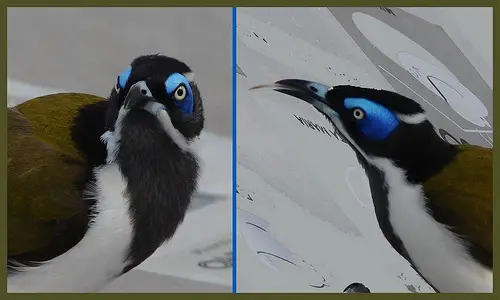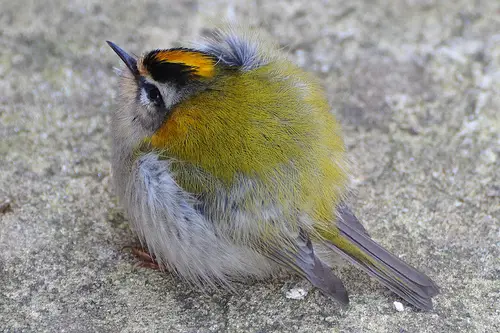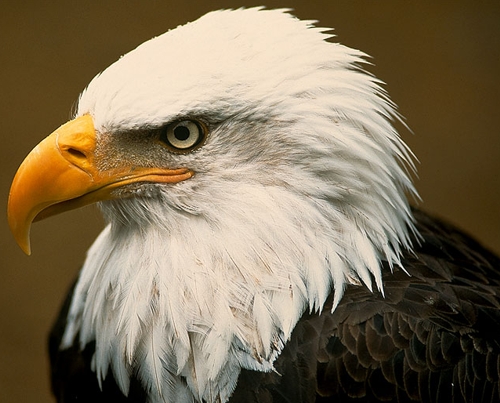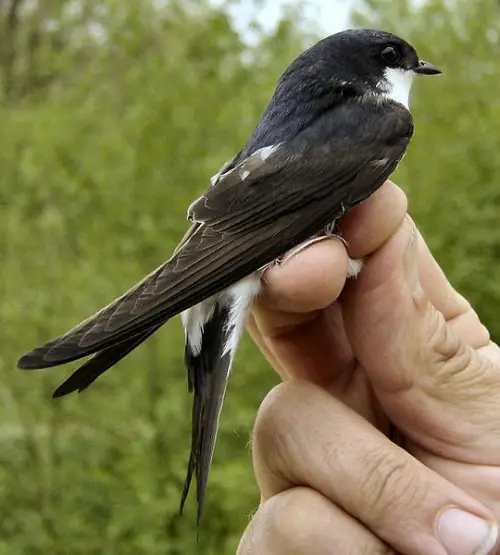Blue-faced Honeyeater
The Blue-faced Honeyeater also known as a Bananabird is a bird that belongs to the Honeyeater family. It is the only member of its genus, and there are 3 subspecies that have been recognised. These birds are found in southern New Guinea and northern and eastern Australia.
The 3 subspecies are:
- E. c. albipennis – first described in 1841 by John Gould, this subspecies is found in northern Queensland, the Northern Territory, and northern Western Australia. It has white parts on its wings, and a stripe on its nape that is not continuous. It has a shorter tail and a longer bill compared to the nominate subspecies.
- E. c. cyanotis – the nominate species is found from Queensland’s Cape York Peninsula to as far as Victoria and south-eastern South Australia.
- E. c. griseigularis – was first scientifically described by the Dutch Naturalist, Eduard van Oort in 1909. It is found in Cape York and New Guinea. It has a white patch on the wing that is bigger than the cyanotis but smaller than the albipennis forms.
The Blue-faced Honeyeater will forage in small groups of up to 7 birds in trees. However, some larger flocks of up to 30 individuals have been reported as well as a mixed-species foraging flock such as the Little Friarbird. Their diet consists of insects such as cockroaches, grasshoppers, termites, lerps, sheild bugs, scale, bark beetles, click beetles, chafers, darkling beetles, leaf beetles, weevils, spiders, ants, bees, moths, and flies. Some Blue-faced Honeyeaters have also been sighted preying on small lizards.
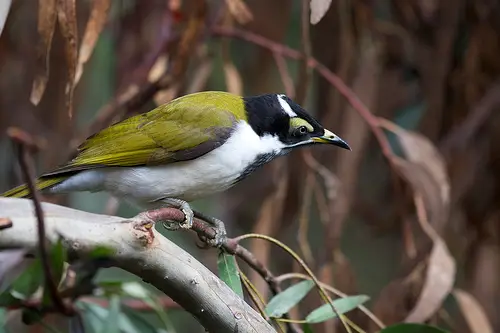
A Juvenile Blue-Faced Honeyeater - As this young bird matures, the yellow patch of skin above its eyes will turn the iridescent blue after which it is named.
Other than hunting on trees, they can often invade a camp-site. This is because they are friendly and inquisitive birds who also search for edible items such as milk, remnants of honey or jam, insects, and fruits.
Those who wish to keep a Blue-faced Honeyeater in an aviary in New South Wales, Australia require a licence. This licence requires the applicant to have 2 years worth of experience in keeping birds as well as having the proper facilities to house them. They can bee seen all over the world such as in the Lincoln Park Zoo, Birmingham Zoo, Philadelphia Zoo, Chessington Zoo, Taronga Zoo, and Edinburgh Zoo.
